Onions are a staple ingredient in recipes around the world. But what if you don't like the taste, have run out, or have a food intolerance to this flavorful vegetable? You have options.
Before determining the best substitution for onions, it's best to understand what they are, how they are used, and the many varieties your recipe may call for.
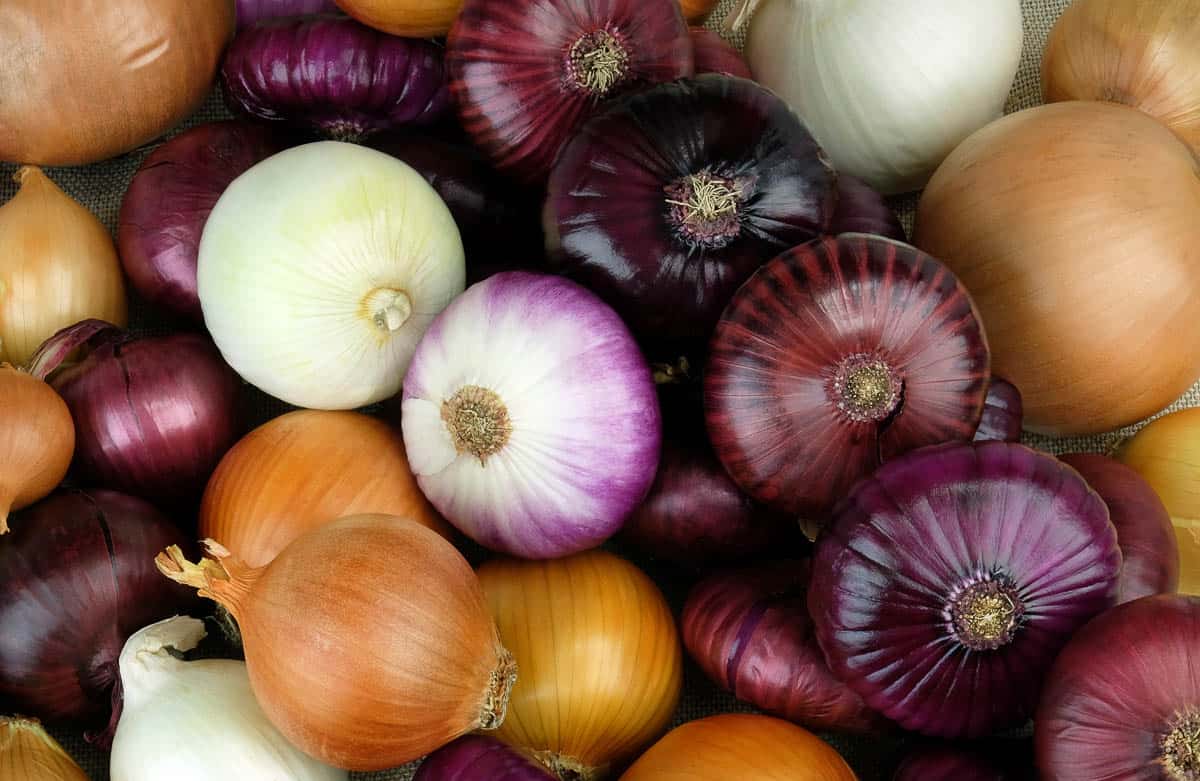
Jump to:
What are Onions?
Onions (allium cepa) are a vegetable belonging to the allium family, and they may also be known as bulb onion or common onion. This is a pungent plant and closely related to garlic, leek, and chives.
Different Types of Onions
There are many types of onions. Typically, they are classified by three unofficial categories. These include storage onions, softies, and little guys.
Storage Onions
These are what you will find available at all major grocery stores.
Storage onions are named after their cultivation and storage process. This type of onion is laid out to dry after harvest, which gives it a longer and more stable shelf life. Thus, they became known as storage onions because they can last a while when stored properly.
Storage onions are further separated into subgroups, and each is classified by color. This is how you will find them labeled in grocery stores. Types include white, yellow, and red.
White Onions
White onions are milder in flavor and softer than red and yellow onions. The skin on this onion is papery and thin. White onions are primarily used in cooking, however, they can also be used raw.
You will see these used in guacamole and salsa and are a popular ingredient in Latin and Central American dishes.
If you prefer a still milder flavor you can place it in cold water for about an hour. This will mellow the flavor.

Yellow Onions
The yellow onion– also known as a brown onion– is the most flavorful and considered to be all-purpose. They are often more pungent than most, thanks to their high sulfur content. This makes it less enjoyable to eat raw.
These are best used in cooked dishes like soups, stews, sauces, and risotto. Common preparations include sauteed, caramelized, and roasted. Yellow onions get sweeter the longer they cook, and they will remain resilient when cooked for long durations (rather than turning mushy).
If a recipe calls for an onion but doesn’t specify which type to use, yellow onion is your best bet.
Sometimes, a recipe may call for Spanish onion. This is a close relative, although it is larger, milder, and somewhere between a yellow and white onion. Thus, yellow onion makes a good substitute whenever Spanish onions are unavailable.

Red Onions
The red onion has a spicy flavor and sharp taste. Moreover, the magenta color brings a unique hue to dishes. Best when served raw or grilled, red onion is most popular in salads, sandwiches, burgers, salsas, and pickled.

Sweet Onions
As the name implies, these have a sweeter flavor than the yellow onion. In the grocery store, you may see these labeled as Georgia Vidalias, Washington Walla Wallas, Bermuda onion, OsoSweet from South America, or Hawaii’s Maui onion.
Sweet onions contain more water and less sulfur. Because they are moister than other onions, freshly harvested sweet onions do not store well and should be refrigerated. This variety can mold quickly if stored in plastic baggies, so it’s recommended to store them uncovered in a vegetable crisper if possible.
More importantly, sweet onions are not a good substitute for yellow because they are not as pungent and have a tendency to break down more easily. Both flavor and presentation will fall short if attempting to substitute sweet onions for the storage onions mentioned above.
These are best raw in salads, sandwiches, on top of burgers. They also make great fried onion rings!

Softies
Next, we have softies. These onions are named for their more delicate consistency and include scallions and sweet, green, spring, and Chinese onions. Because of their similarities, they can pretty much all be used interchangibly.
Green Onions
These are onions that are harvested before bulbing. They are found in the store and sold by the bunch.

Scallions
Scallions, contrary to what people may think, have been bred not to bulb. It has a long white shank just prior to its green leaves.
Interestingly, green onions and scallions are basically the same and can be used interchangeably. Technically, the only difference is that the former is harvested before it forms a bulb, whereas the latter doesn’t form a bulb at all.
Chinese Onions
Chinese onions are in the allium family and native to China. They are a close relative to onions, shallots, garlic, leek, and chives. These onions have white bulbs, long green leaves, purple flowers, and a characteristically mild flavor.
Spring Onions
Sometimes, spring onions are called green onions. However, there is a subtle difference. Spring onions are left to grow longer and, as a result, have a larger bulb.
Little Guys
Finally, we have little guys. This subgroup includes things like shallots, cipollini, and pearl onions.
Shallots
Shallots have a sweet and delicate onion-like flavor. You can use shallots anywhere you would use an onion. Like garlic, shallots have multiple lobes that can be separated, chopped, and used in a variety of recipes for added sweetness and depth.
Shallots are best when diced and used in salad dressings, or roasted with meats.

Cipollini Onions
These small Italian onions look similar to vidalia onions, but have a unique sweetness that is popular for use in roasting and braising. They are also common in soups, stews, and vegetable dishes.
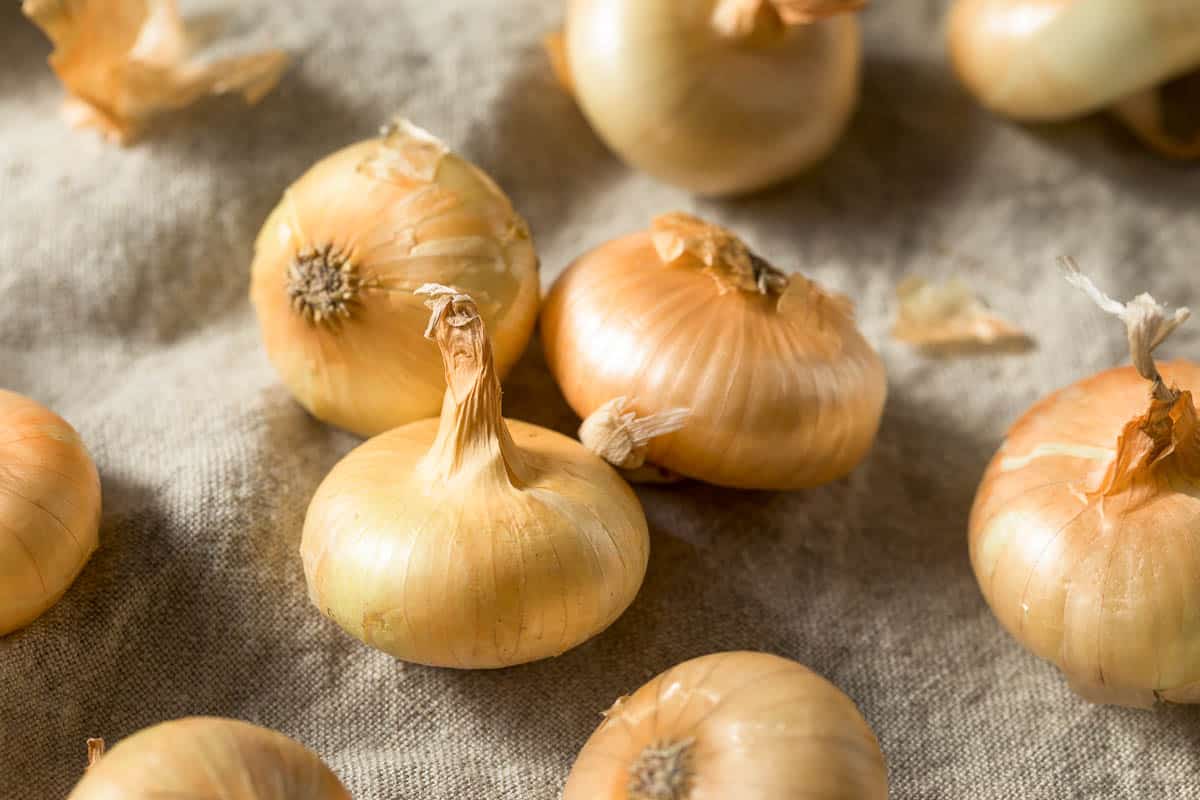
Pearl Onions
Smaller than Cipollini onions, pearl onions are mild and sweet. White are most common, although red and yellow varieties exist. This kind of onion is most commonly used in glazed, pickled, creamed, braised and roasted recipes.
Tip: Make it easier to remove the skin by boiling, i.e. blanching, the onion for a couple of minutes. Then, cool in ice water and peel.
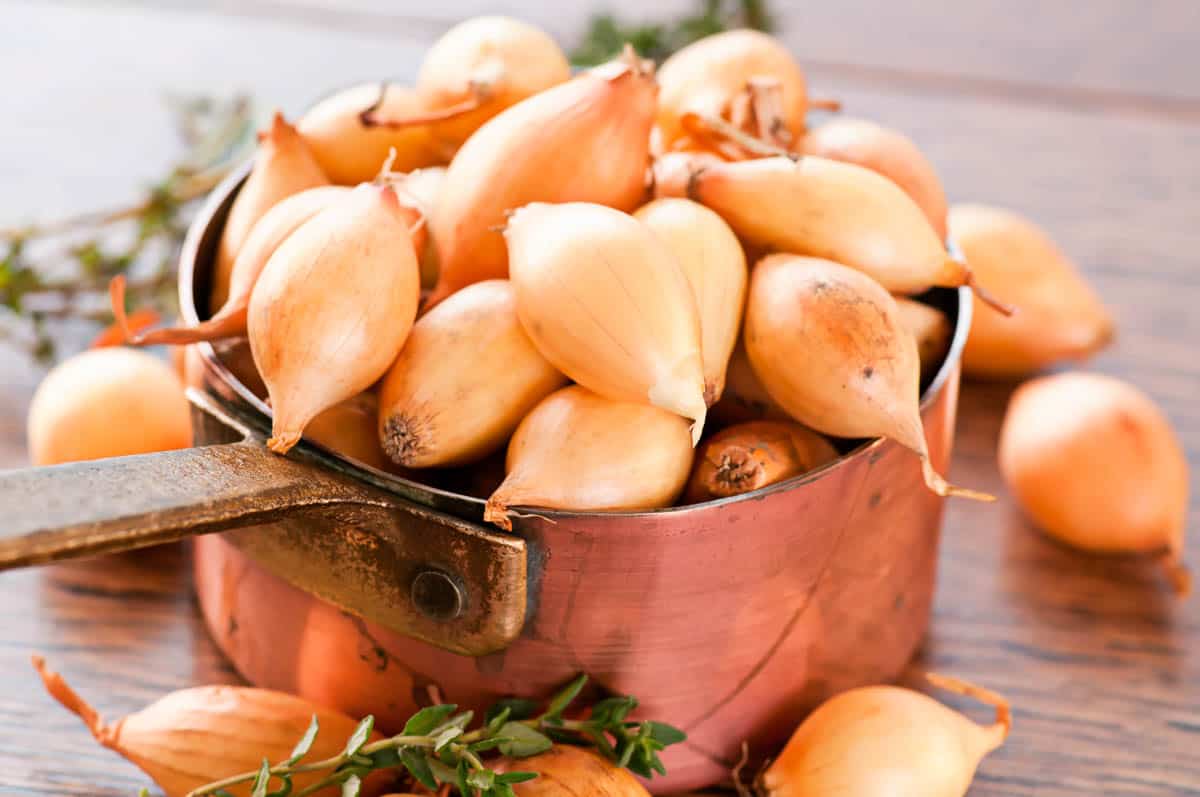
Interesting Onion Facts
Few vegetables have been around longer than the onion. Onions were first cultivated in Central Asia about 5,000 years ago, but anthropologists believe wild onions to be a major staple in prehistoric diets many centuries earlier.
For thousands of years, onions have played an important and sometimes mythical role in human culture. While the Egyptians revered the plant for its healing powers (and believed the inner circular layers symbolize eternal life), the Greek and Roman empires used onions for both medicinal and sports performance benefits.
Interestingly, onions have a long history of use as a performance enhancing veggie. Long before Popeye had his spinach, ancient Greek athletes drank onion juice and rubbed raw onion on their bodies before competing in the first Olympic games.
Onions are a good source of vitamins, minerals and fiber, particularly vitamin C, B6, potassium and magnesium. They are also rich in plant compounds, antioxidants and anti-inflammatories.
Onion is also one of the richest sources of quercetin – a powerful plant compound that only recently became culturally relevant for its potential to help treat symptoms of illness.

Considerations Before Choosing an Onion Alternative
There are many delicious substitutes for onions. However, consider the following before choosing one.
Is onion the main ingredient?
If onion is the main ingredient, it’s unlikely you will find a good substitute that won’t change the entire recipe. After all, think of French Onion Soup without the onions! Your best bet is to use a different variety of onion.
Are you substituting because you are allergic?
Remember, onions are a part of the allium family, which also includes popular onion substitutes like leeks, chives, and scallions. If you are allergic or have an intolerance to onions, steer clear of those and choose something that is not a part of the allium family. For ideas, see Best Non-Onion Substitutes section below.
Are you looking for a fresh, powdered, or non-onion substitute?
Each one is unique, so they are broken into different sections below. As mentioned, the “non-onion” substitutes are likely the best option if you have an allergy.
Best Substitutes for Onions - Fresh Options
Since a recipe that calls for "onion" is most often referring to the common yellow onion, these are your options if you need a replacement for this ingredient.
Shallots
Shallots are considered to be one of the best substitutions due to its similar flavor profile but milder taste. Wherever you use a storage onion you can use a shallot. They can be used in salads, soups, stews, sauces, and meat dishes to name a few.
- Tastes Like: Sweet onion, but sharper and without the heat.
- Substitution: Use 6 small shallots, 4 medium shallots or 2 large shallots for 1 medium (1 cup chopped) onion.
- Special Notes: Widely considered the best substitute, especially for storage onions. Keep in mind that one bulb is considered one shallot, even if it has two lobes.
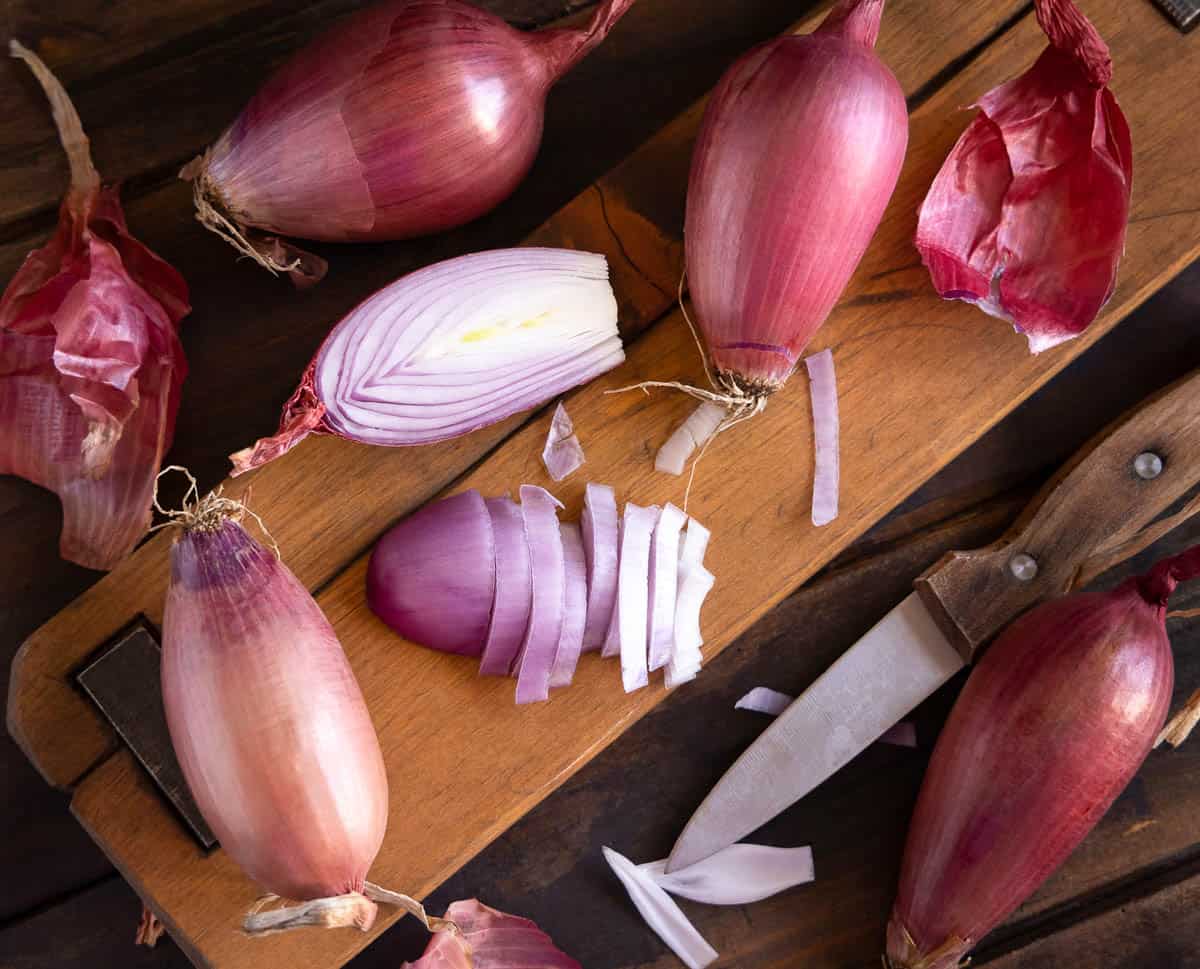
Leeks
These are a good substitute in cooked dishes. Leeks are closely related to onions, scallions and garlic along with chives, shallots, and Chinese onions. The taste is milder and sweeter.
- Tastes Like: Milder yet sweeter than onion
- Substitution: Use 1 large leek for 1 medium onion (1 cup chopped)
- Special Notes: Great for cooked dishes like soups, stews, quiches, sauces, vegetables, and even stir fry.
Ramps
Ramps are also known as wild leeks, though they are not technically leeks. Preferring high altitudes and low light areas, ramps are found along the Appalachian mountains and southeastern Canada.
Ramps have a short growing season of about 3 weeks in the spring, and they resemble a scallion with wider green leaves. Their taste is between an onion and garlic. As they are very strong, use sparingly and in cooked dishes.
- Tastes Like: Mixture of onion and garlic. Strong flavor, so use sparingly.
- Substitution: Use a 1:1 ratio. For example, substitute 1 cup of ramps for every 1 cup of onion.
- Special Notes: Popular in purees and sauces, pasta, eggs, salmon, on pizza and pickled. If a recipe calls for ramp, scallions can also be substituted.

Green Onions/Scallions
Known as bunching onions, these have a milder flavor. They can be used raw or cooked. While the long green shoots are usually used as garnish, the white part is often used in raw or cooked recipes.
Green onion/ scallions are most common in salads, soups, stews, vegetable dishes, quiches, omelets, and stir fry.
- Tastes Like: White onion, but sharper and spicier
- Substitution: Use 6-8 stalks of green onion/scallion for 1 medium onion (1 cup chopped)
- Special Notes: Cut the root off the white end (small bulb) and 1-2” off the hollow green stalk. You can use the entire green onion/scallions in your recipe.

Chives
Chives are considered an herb with an onion-like flavor. They have long hollow stems and a purple flower, both of which are edible. Chives are in the allium family, and therefore closely related to onions, garlic, leeks, and shallots.
When it comes to chives, freshness is essential. They can be used with potatoes, eggs, soups, fish, and in salads and as a garnish.
- Tastes Like: Onion and garlic, with flavor being most pronounced when eaten raw.
- Substitution: Use 3 tablespoon chives for every 1 medium green onion (or 1 tablespoon onion)
- Special Notes: An especially popular green onion substitute. Typically used raw. Chives lose their flavor when heated, so add at the end of the recipe if cooking.
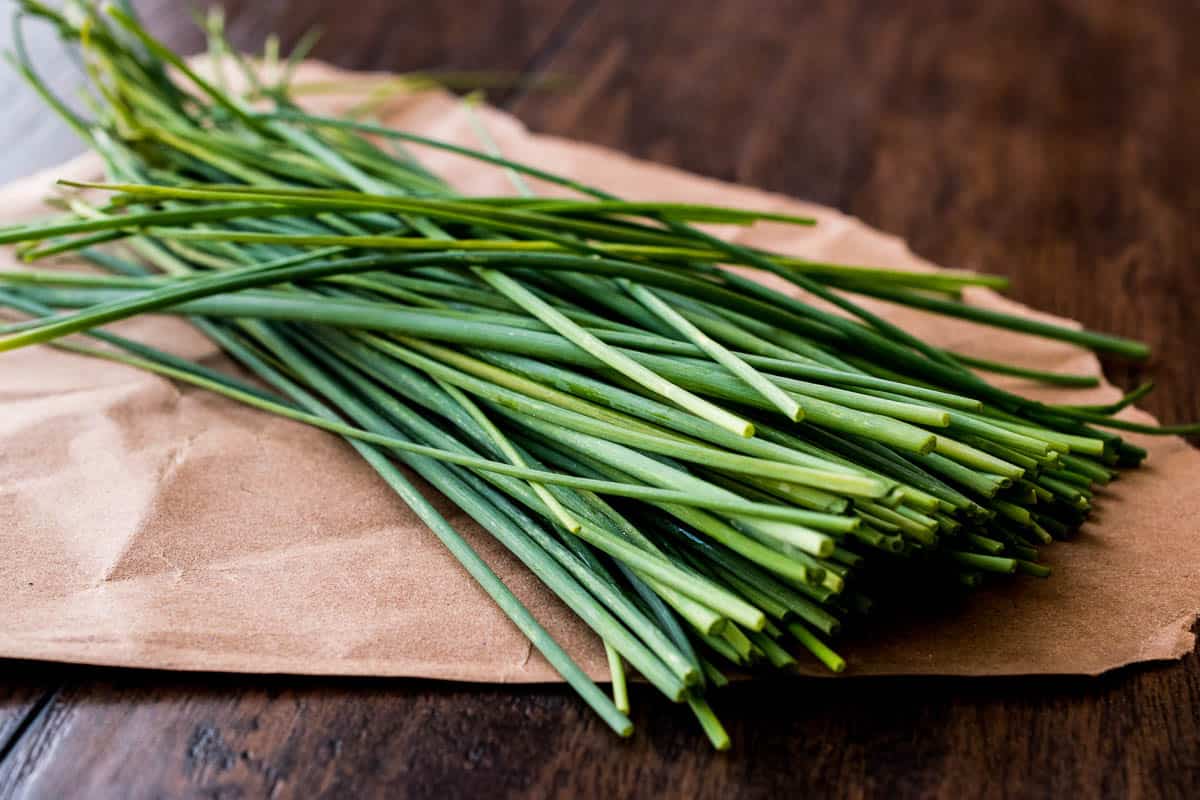
Onion Paste
Onion paste can either be purchased at the store or made at-home. There are 2 ways you can make the paste: By boiling, and by sauteing.
To make onion paste, simply cook the onions (either boil or fry/saute) then blend until smooth in a food processor. Note: Frying/sauteing the onions will make the paste more flavorful.
- Tastes Like: Onion, specifically the onion(s) used to make the paste
- Substitution: Varies depending on store bought vs. homemade. Start with a small amount, then add more until desired taste is reached.
- Special Notes: Great for Indian dishes. Popular in sauces, gravies, and pasta dishes as well.
Best Onion Substitutes - Dried or Powdered Options
This section contains dry and powdered onion alternatives. Note that using one of these will change the texture of the dish. This will be most obvious in dishes where onions are used raw, or otherwise presented in long/thick slices.
If texture and presentation are not important, the following alternatives make excellent substitutions and have a long shelf life when properly stored.
Onion Powder
Onion powder is dehydrated and ground onion. This has a more concentrated and stronger flavor compared to whole raw onions.
Perfect in soups, marinades, dressings, rubs for meats, stews and sauces. For best results, mix the onion powder with other spices called for in the recipe.
- Tastes Like: Stronger, more concentrated onion.
- Substitution: Use 1 tablespoon of onion powder for 1 medium (1 cup chopped) onion.
- Special Notes: Easy and straight-forward substitution. Best for soups, marinades, dressings, rubs, stews and sauces

Onion Flakes
Onion flakes are dehydrated and minced onions. The flavor of onion flakes is not as strong as onion powder, so it requires more in your recipe. To rehydrate the onion flakes (this is optional), simply boil for about 30 minutes.
- Tastes Like: Not as strong as onion powder, so more is used
- Substitution: Use 3 tablespoon of onion flakes for 1 medium onion (1 cup chopped)
- Special Notes: Onion flakes are best used in recipes that have moisture such as soups, stews, casseroles, meatloaf and sauces. This will rehydrate the flakes while it cooks. If you want to rehydrate the onion flakes, put in boiling water for about 30 minutes.

Onion Salt
With 3 parts salt to 1 part dried, ground onion, this can be substituted in many dishes including soups, sauces, marinades and stews.
- Tastes Like: Primarily salty, with accent of onion flavor
- Substitution: Use 2 teaspoon onion salt for 1 medium onion (1 cup chopped)
- Special Notes: Due to its high salt content, use with care. If using in a recipe that also calls for table salt, consider leaving it out.
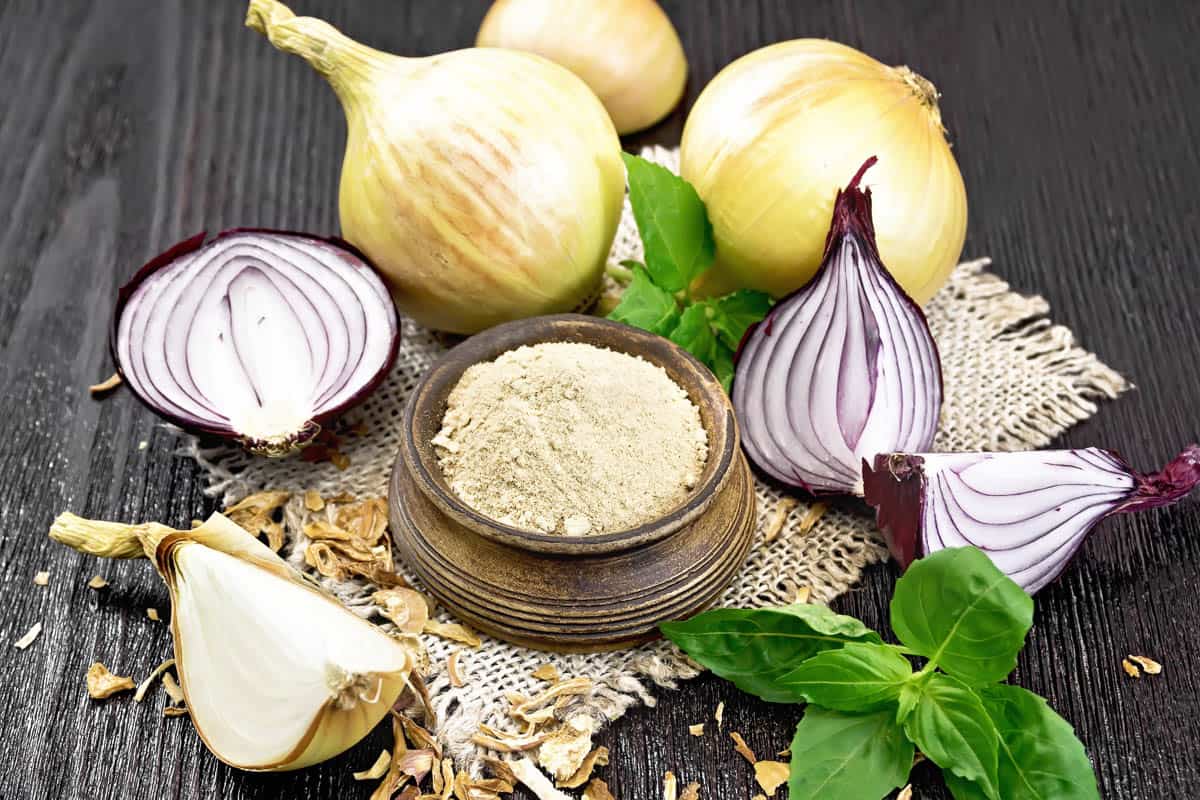
Asafoetida (also referred to as hing)
This is a gum extracted from ferula, which is an herb in the celery family. It is very pungent. In order to use this powder, you must first saute it in either olive oil or ghee for a few minutes to mellow out the flavor and potent smell.
Asafoetida is not a member of the allium family, which makes it an ideal substitute for anyone looking to avoid onion and garlic due to allergies or cultural purposes.
This herb is used in both South Asian and Indian vegetarian dishes to enhance the flavor. You can use it in curries, vegetable dishes, soups, stews and meat dishes.
- Tastes Like: Savory, similar to onion, and often used in place of garlic.
- Substitution: Start with a small amount (e.g. 3 tsp) and sautee in 1-2 tablespoons of oil or ghee.
- Special Notes: Ideal for those allergic to onions and garlic. The pungent smell will permeate other nearby spices, so be sure to put this in an airtight container.
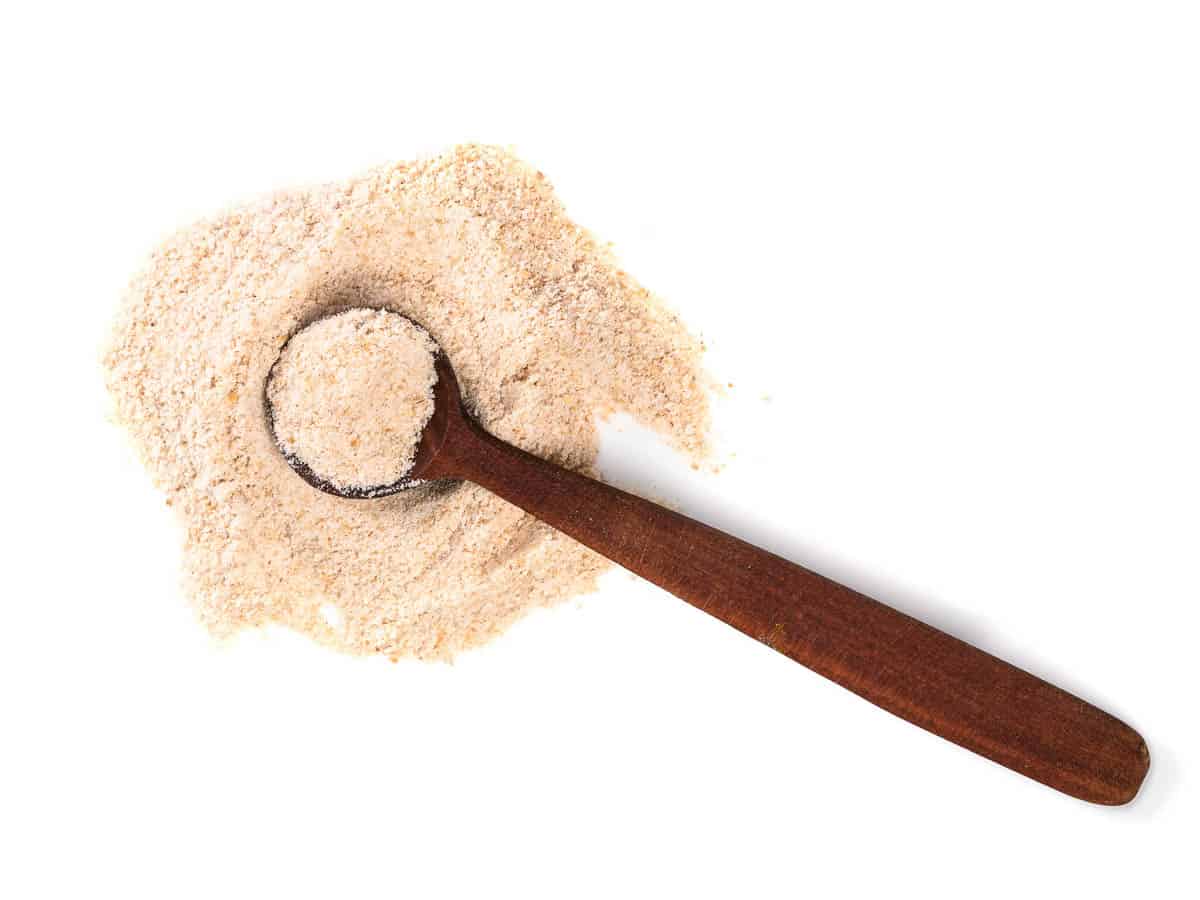
Best Non-Onion Substitutes
The following substitutes are sure to liven-up your recipes, no onion required! Some of these are ideal for individuals who are allergic to onions, or trying to avoid all allium plants for religious or cultural reasons. Only some of the options below are not part of the allium plant family.
Experiment, but use caution– these substitutions may differ significantly from onion in terms of taste and texture. Read the descriptions below and compare the flavors to the recipe to ensure things mesh well.
Fennel
Fennel actually resembles an onion, with its large white bulb and green stalks. When raw, fennel has an anise/ black licorice flavor. It is milder and sweeter when cooked, with a more onion-like texture.
Fennel can be used in soups, salads, stews, and vegetable dishes. The fennel bulb can be grilled, braised, sauteed, and roasted and used raw.
- Tastes Like: Anise / black licorice when raw, sweeter and more onion-like when cooked
- Substitution: Use 1 fennel bulb (1 to ½ cups chopped fennel bulb) for 1 medium to large onion.
- Special Notes: Cook for a milder, sweeter, and more onion-like flavor and texture.

Celery
While celery doesn’t taste like onion, it does have a similar crunchiness. It brings its own unique and spicy flavor to the recipe, making it a great substitution for anyone interested in onion alternatives that create body and texture.
Celery is most commonly used as an onion substitute in soups, stews, and salads.
- Tastes Like: Mildly spicy, almost peppery
- Substitution: Use 2-3 stalks of celery for 1 medium onion. Use 1 cup chopped celery for 1 cup chopped onion.
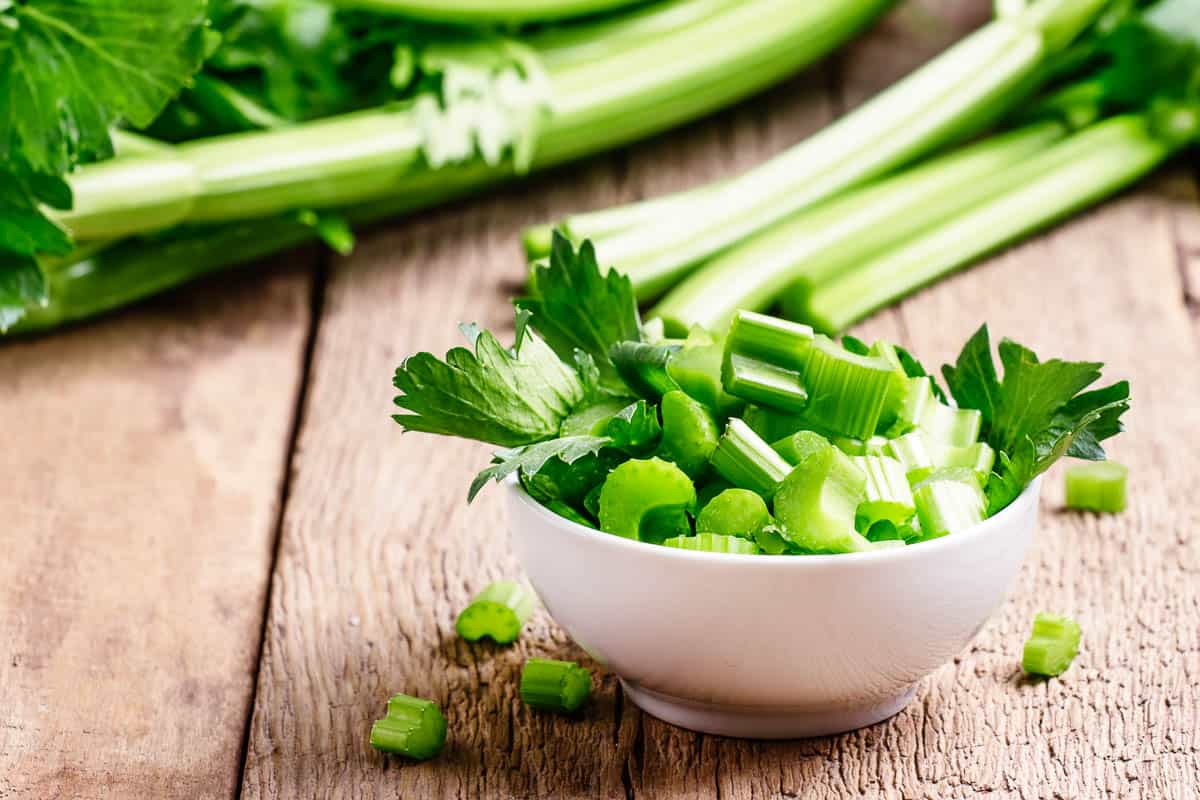
Carrots
Carrots can make a good substitute for onions in many dishes. Used alone, carrots bring sweetness to the dish. However, they can also be combined with celery for extra flavor.
- Tastes Like: Sweet, woody, and earthy.
- Substitution: Use 2 cups chopped carrots for 1 cup chopped onion.
- Special Notes: Excellent for adding sweetness and texture.

Bell Peppers
Bell peppers are another option that isn’t often thought of as a substitute for onions. Like onions, bell peppers turn sweet when cooked and complement many recipes quite well.
Bell peppers thicken and add bulk to many dishes, which makes them a great addition to hearty recipes. If you like spicy foods, consider using hot peppers when making curries and chili.
- Tastes Like: Mild and sweet, especially when cooked.
- Substitution: Use a ratio of 2:1 when substituting peppers for onions as peppers are less pungent.
- Special Notes: Although available in red, yellow, and green, all bell peppers share a similar sweetness when cooked– so color doesn’t matter much. For a spicy kick, go for hot peppers instead.
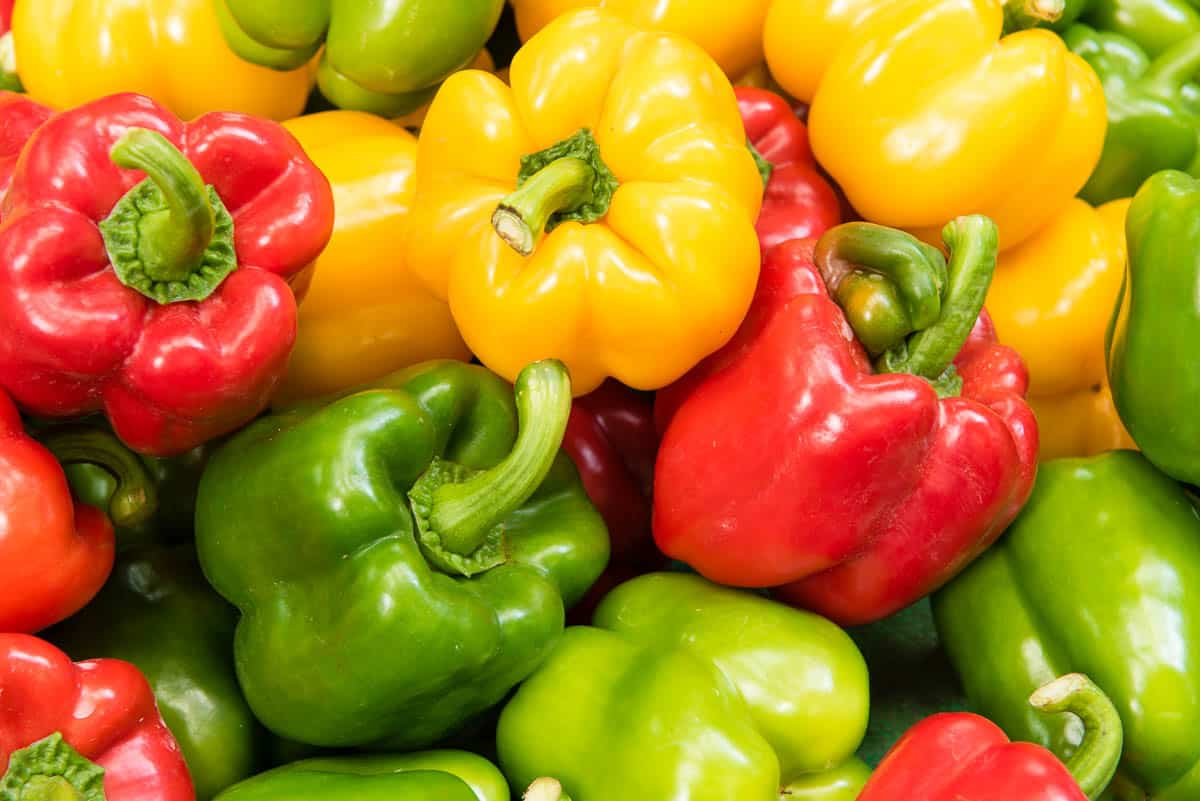
Green Garlic
Green garlic resembles a green onion or scallion with a white bulb that can have a pink or purple tinge. It is milder than garlic and stronger than a green onion or scallion. Overall, this variety is considered a better onion alternative than ordinary garlic.
- Tastes Like: Closer to onion than regular garlic, with a mellow sweetness when cooked.
- Substitution: Use 1 stalk and bulb of green onion for 1 small onion.
- Special Notes: Green garlic has a sharp taste when raw, but it mellows out when cooked. It is best used in stir fry, soups, potato salad, salad dressings and along with roasted meats.

Garlic
Garlic has a bulb that grows underground, making it similar to onions, shallots and chives. As such, it is botanically a vegetable. However, it is used as a seasoning enhancing the flavor of various dishes.
- Tastes Like: Pungent when raw, but sweet and buttery when cooked.
- Substitution: Use 3 cloves of garlic for 1 medium onion. Adjust the amount of garlic for taste.
- Special Notes: Garlic is a popular alternative to onion, despite not having a very similar flavor profile. That’s because both are rich in sulfur, which gives them their distinctive aromas and flavors.

If you are in need of a great substitute for onion, enjoy experimenting with these alternatives! Just remember: Always read your recipe thoroughly, then choose the best onion substitution based on your needs for flavor, texture, and presentation.
Do you have any other tried and true substitution recommendations? Please let me know in the comments!


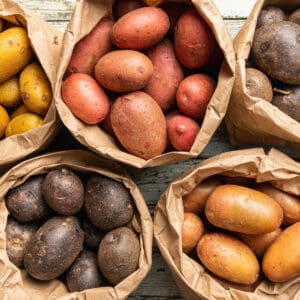

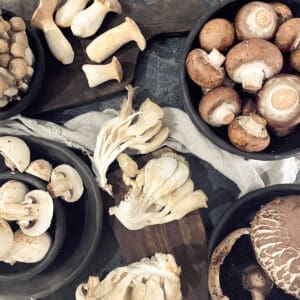
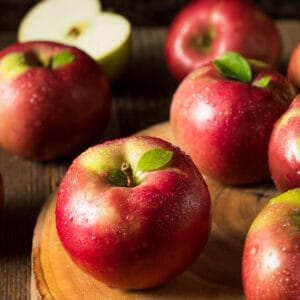
Leave a Reply